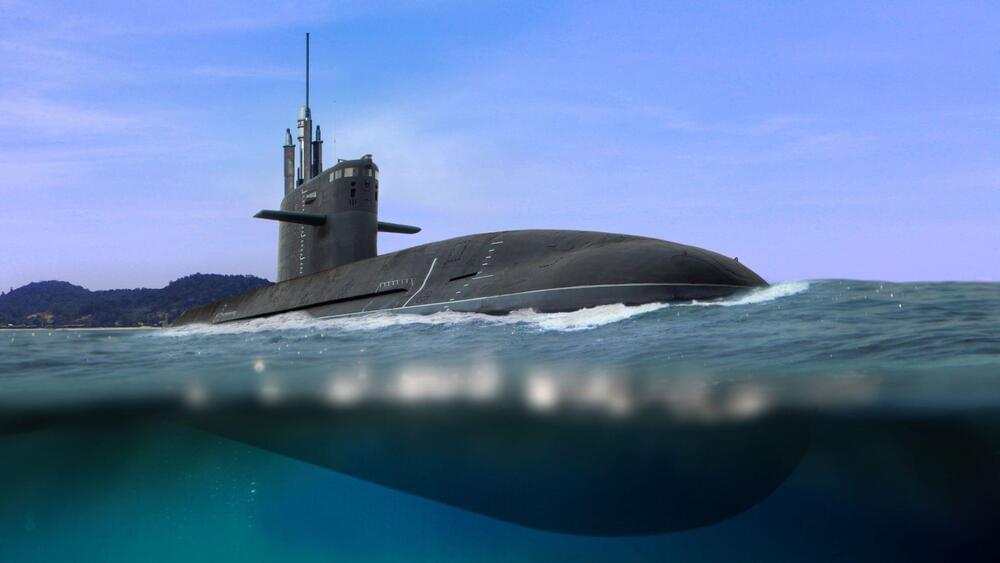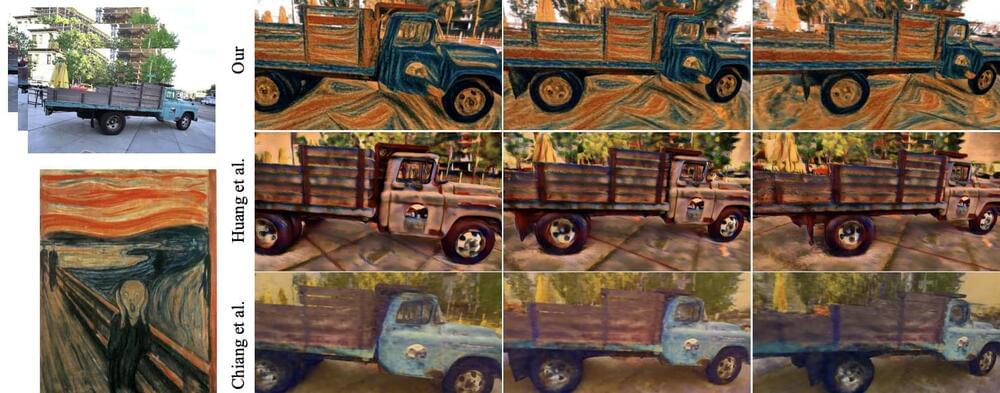GPS for scuba divers, cars with built-in holographic maps, and other new tech mean ’you’ll never get lost again.‘.


FOR as long as internal combustion has ruled the roads, vehicles have been fitted with just three basic types of engine: four-stroke, two-stroke, and rotary.
Each differs from the next with regard to its power density and fuel economy, but the general premise of each is very similar. Air and fuel go in, get ignited, and push the piston (or rotor) which in turn rotates the crankshaft creating motion.
It’s a simple enough process, and through well over 100 years of fettling and refining, petrol engines have become ever more potent, economical, and advanced.

The flight lasted for five hours and six minutes over the Mojave Desert.
For the first time on Friday, October 28, Stratolaunch’s Roc, the world’s largest plane, flew a prototype of the Talon-A separation test vehicle, TA-0, its air-launched hypersonic vehicle.
According to a press release, the flight centered on measuring the aerodynamic loads on the Talon-A vehicle. “The loads captured in flight will validate aerodynamic predictions to ensure the release mechanism will function as designed,” it said.
Stratolaunch.
The flight, which was Roc’s eighth, lasted for five hours and six minutes over the Mojave Desert, reaching an altitude of 23,000 feet (7,000 meters).
https://youtube.com/watch?v=CWQTqw-fMrc&feature=share
👉For business inquiries: [email protected].
✅ Instagram: https://www.instagram.com/pro_robots.
You are on the PRO Robots channel and in this video we present information technology news. The world’s largest exhibition of robots and technologies of the future GITEX 2022 was held in Dubai. Revolutionary developments, innovative technologies, futuristic solutions, robots and unmanned cars. We have chosen all the most interesting things for you and compiled them into one video. Watch to the end and subscribe to the channel. Let’s fly!
00:00 Intro.
00:28 500 companies at the exhibition.
00:59 Ameca Robot.
01:34 XTurizmo Limited Edition Flying Motorcycle.
02:01 The largest flying vehicle.
02:56 Flying cars Skydrive.
03:29 Cadillac InnerSpace autonomous electric car.
04:13 Surgical Microscope.
05:29 EndiaTX’s PillBot.
06:06 Mini Robot.
06:21 Promobot at the show.
07:03 Robosculptor.
07:32 Cruise Origin.
07:47 Taxi Microbus.
08:12 Thermite RS3 robot fireman from Howe & Howe.
08:42 FlyCam’s Neo Octocopter.
09:16 Swiss-Mile.
09:56 Mwafeq, a four-legged robot.
10:22 Mobile robots OttoBot by Ottonomy.
10:45 Acer Spatial labs.
11:08 Pepper robots.
#prorobots #robots #robot #futuretechnologies #robotics.
More interesting and useful content:
✅ Elon Musk Innovation https://www.youtube.com/playlist?list=PLcyYMmVvkTuQ-8LO6CwGWbSCpWI2jJqCQ
✅Future Technologies Reviews https://www.youtube.com/playlist?list=PLcyYMmVvkTuTgL98RdT8-z-9a2CGeoBQF
✅ Technology news.
https://www.facebook.com/PRO.Robots.Info.
#prorobots #technology #roboticsnews.
Kat DeLorean has built a new company to engineer the vehicle.
Kat DeLorean, daughter of legendary automotive engineer John DeLorean is building a new sports car to honor her father’s memory, according to a blog of the car’s site.
DNG Motors.
A historic endeavor.

With an estimated 60 to 70 vessels, China allegedly possesses the largest fleet of conventional submarines in the world.
The Chinese Navy could finally use lithium technology to replace the lead-acid batteries that are now used in its fleet of conventional submarines.
Since lithium batteries had a higher risk of catching fire or exploding, the navy was hesitant to replace the submarine fleet’s current batteries with them.
Razihusin/iStock.
Lithium-ion batteries could soon power China’s massive fleet of conventional submarines due to advancements in the nation’s globally dominant electric car industry, according to a study by China’s Navy, reported on Saturday by South China Morning Post (SCMP).
Andrej Karpathy is a legendary AI researcher, engineer, and educator. He’s the former director of AI at Tesla, a founding member of OpenAI, and an educator at Stanford. Please support this podcast by checking out our sponsors:
- Eight Sleep: https://www.eightsleep.com/lex to get special savings.
- BetterHelp: https://betterhelp.com/lex to get 10% off.
- Fundrise: https://fundrise.com/lex.
- Athletic Greens: https://athleticgreens.com/lex to get 1 month of fish oil.
EPISODE LINKS:
Andrej’s Twitter: http://twitter.com/karpathy.
Andrej’s YouTube: http://youtube.com/c/AndrejKarpathy.
Andrej’s Website: http://karpathy.ai.
Andrej’s Google Scholar: http://scholar.google.com/citations?user=l8WuQJgAAAAJ
Books mentioned:
The Vital Question: https://amzn.to/3q0vN6q.
Life Ascending: https://amzn.to/3wKIsOE
The Selfish Gene: https://amzn.to/3TCo63s.
Contact: https://amzn.to/3W3y5Au.
The Cell: https://amzn.to/3W5f6pa.
PODCAST INFO:
Podcast website: https://lexfridman.com/podcast.
Apple Podcasts: https://apple.co/2lwqZIr.
Spotify: https://spoti.fi/2nEwCF8
RSS: https://lexfridman.com/feed/podcast/
Full episodes playlist: https://www.youtube.com/playlist?list=PLrAXtmErZgOdP_8GztsuKi9nrraNbKKp4
Clips playlist: https://www.youtube.com/playlist?list=PLrAXtmErZgOeciFP3CBCIEElOJeitOr41
OUTLINE:
0:00 — Introduction.
0:58 — Neural networks.
6:01 — Biology.
11:32 — Aliens.
21:43 — Universe.
33:34 — Transformers.
41:50 — Language models.
52:01 — Bots.
58:21 — Google’s LaMDA
1:05:44 — Software 2.0
1:16:44 — Human annotation.
1:18:41 — Camera vision.
1:23:46 — Tesla’s Data Engine.
1:27:56 — Tesla Vision.
1:34:26 — Elon Musk.
1:39:33 — Autonomous driving.
1:44:28 — Leaving Tesla.
1:49:55 — Tesla’s Optimus.
1:59:01 — ImageNet.
2:01:40 — Data.
2:11:31 — Day in the life.
2:24:47 — Best IDE
2:31:53 — arXiv.
2:36:23 — Advice for beginners.
2:45:40 — Artificial general intelligence.
2:59:00 — Movies.
3:04:53 — Future of human civilization.
3:09:13 — Book recommendations.
3:15:21 — Advice for young people.
3:17:12 — Future of machine learning.
3:24:00 — Meaning of life.
SOCIAL:
- Twitter: https://twitter.com/lexfridman.
- LinkedIn: https://www.linkedin.com/in/lexfridman.
- Facebook: https://www.facebook.com/lexfridman.
- Instagram: https://www.instagram.com/lexfridman.
- Medium: https://medium.com/@lexfridman.
- Reddit: https://reddit.com/r/lexfridman.
- Support on Patreon: https://www.patreon.com/lexfridman

Art is a fascinating yet extremely complex discipline. Indeed, the creation of artistic images is often not only a time-consuming problem but also requires a significant amount of expertise. If this problem holds for 2D artworks, imagine extending it to dimensions beyond the image plane, such as time (in animated content) or 3D space (with sculptures or virtual environments). This introduces new constraints and challenges, which are addressed by this paper.
Previous results involving 2D stylization focus on video contents split frame by frame. The result is that the generated individual frames achieve high-quality stylization but often lead to flickering artifacts in the generated video. This is due to the lack of temporal coherence of the produced frames. Furthermore, they do not investigate the 3D environment, which would increase the complexity of the task. Other works focusing on 3D stylization suffer from geometrically inaccurate reconstructions of point cloud or triangle meshes and the lack of style details. The reason lies in the different geometrical properties of starting mesh and produced mesh, as the style is applied after a linear transformation.
The proposed method termed Artistic Radiance Fields (ARF), can transfer the artistic features from a single 2D image to a real-world 3D scene, leading to artistic novel view renderings that are faithful to the input style image (Fig. 1).

It is the first coal carrier to be powered by hard sail wind power propulsion technology.
The world’s first partly wind-powered bulk carrier ship sailed to the Port of Newcastle on its maiden voyage this week. The Japanese shipping company Mitsui O.S.K. Lines (MOL), which delivered the 100,422 dwt (dead-weight tonnage) bulker on October 7, 2022, sailed to Newcastle on Monday, reported Offshore Energy.
The Japanese shipping company Mitsui O.S.K. Lines (MOL), which delivered the 100,422 dwt (dead-weight tonnage) bulker on October 7, 2022, sailed to Newcastle on Monday, reported Offshore Energy.
“The world’s first bulk carrier to be partially powered by wind, the Shofu Maru, sailed into #Newcastle this morning on its maiden voyage,” the Port of Newcastle authorities wrote on Twitter.

This harkens back to the first time he spoke about Twitter as a town square.
Elon Musk, CEO of Tesla, has now confirmed he is buying Twitter. The billionaire has tweeted a letter of sorts addressed to the advertisers who use Twitter. In the letter, Musk explains why he bought Twitter and that most of the speculation surrounding the purchase has been wrong.
Twitter is important to civilization
In the letter, which is separated into three parts, each a tweet, he starts off by saying right away that he feels Twitter is important to civilization because it provides a “town square” where a wide range of beliefs can debated in a healthy manner, without resorting to violence. This sentiment has been a staple of Musk’s feelings about the social media platform, as he has stated before in interviews.